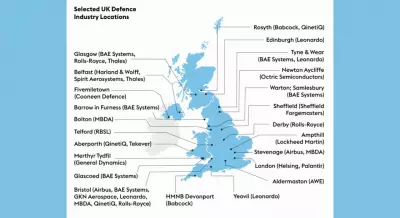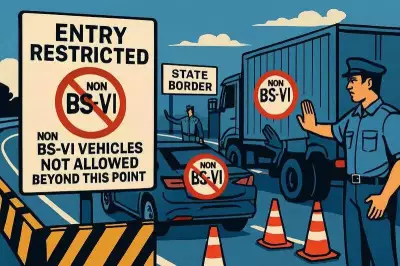
The global nuclear landscape is undergoing a seismic shift as the United States, China, and Russia engage in a dangerous three-way arms race that threatens to upend decades of strategic stability. This new era of nuclear posturing demands fresh thinking about deterrence and defense strategies, particularly for nuclear-armed nations like India.
The New Nuclear Triad: Beyond Cold War Dynamics
Unlike the bipolar standoff of the Cold War era, today's nuclear competition involves three major powers simultaneously expanding and modernizing their arsenals. China is rapidly closing the gap with nuclear superpowers, while Russia continues to develop sophisticated delivery systems. The United States, in response, has initiated its own modernization program, creating a triangular dynamic where each move triggers counter-moves from both rivals.
Deterrence in the Digital Age
Modern nuclear strategy must account for technological advancements that didn't exist during previous arms races. Cyber warfare capabilities, hypersonic missiles, and artificial intelligence integration have transformed the calculus of nuclear deterrence. The traditional concept of mutually assured destruction now coexists with threats of cyber attacks on nuclear command systems and the development of weapons that can evade current defense systems.
India's Strategic Imperative
For India, this escalating great power competition presents both challenges and opportunities. The nation must navigate carefully between its strategic autonomy and the reality of China's growing nuclear arsenal. Meanwhile, the persistent threat from Pakistan's nuclear program requires continuous assessment and adaptation of India's own deterrence posture.
The Collapse of Arms Control Architecture
The international arms control regime that once provided some stability has largely collapsed. Key treaties like the Intermediate-Range Nuclear Forces Treaty are now history, while the New START agreement's future remains uncertain. This regulatory vacuum allows for unchecked weapons development and reduces transparency between nuclear powers.
Regional Implications for South Asia
The global nuclear escalation inevitably affects regional dynamics. As major powers develop new tactical nuclear weapons and delivery systems, neighboring countries face pressure to enhance their own capabilities. This trickle-down effect could destabilize carefully maintained regional balances.
Game Theory and Nuclear Strategy
Contemporary nuclear strategy increasingly relies on complex game theory models that account for multiple actors with conflicting interests. The simple two-player games of the past have evolved into multi-dimensional calculations involving state and non-state actors, conventional and cyber capabilities, and economic considerations.
The evolving nuclear landscape demands sophisticated analysis and careful strategic planning from all nuclear-armed states. As the major powers continue their arms buildup, secondary nuclear states must reassess their positions in this dangerous new game of nuclear chess where the stakes couldn't be higher.





